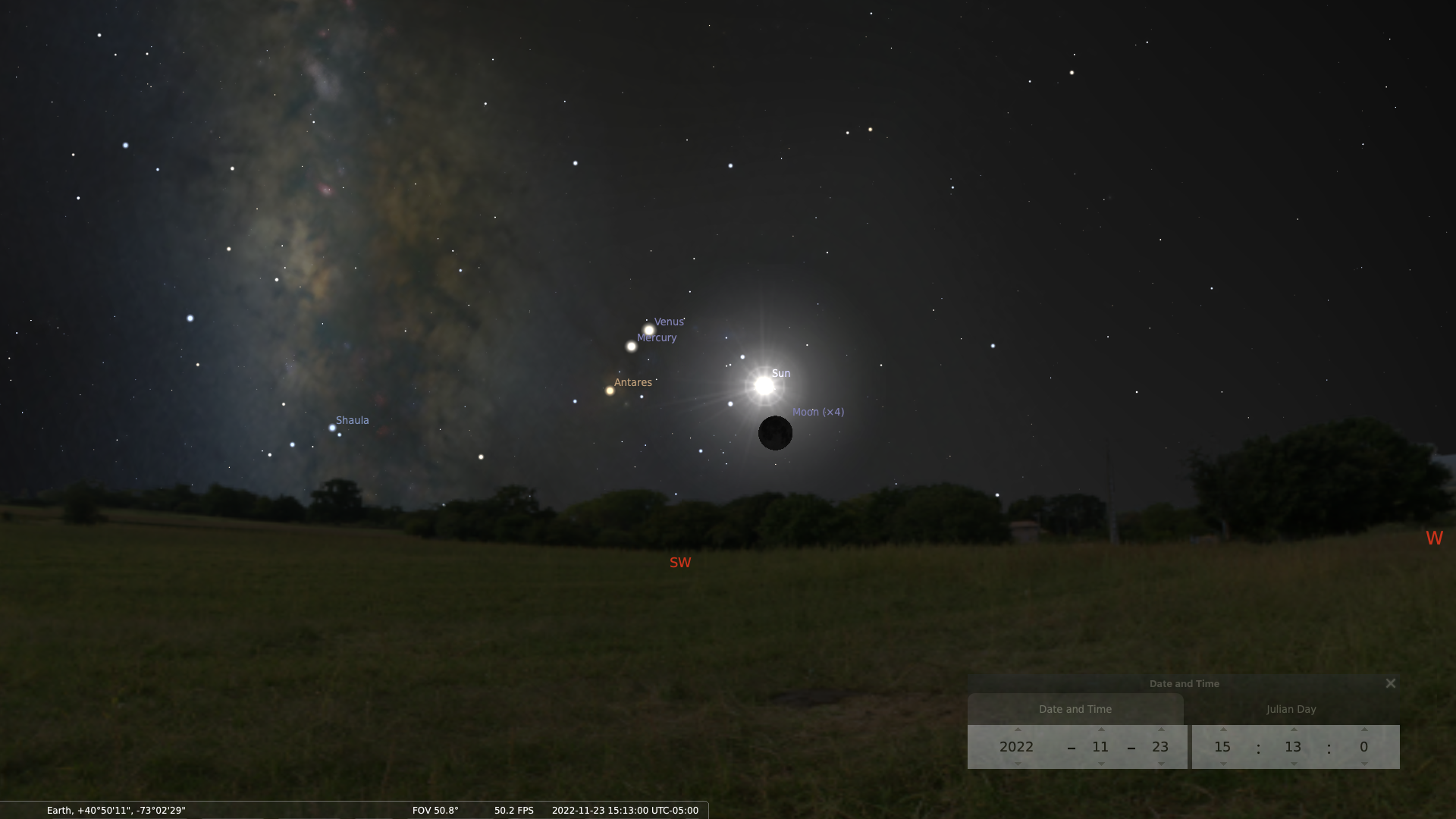
In this view to the west without the atmosphere on November 23, we see the New Supermoon with the setting sun, Venus, Mercury and Antares.
We often speak of a “Super Moon” within the context of the Full Moon phase, rather than its opposite, the ‘New’ moon.
The New moon is the beginning of the lunar cycle when the moon is aligned with the earth and the sun with the moon towards the sun. It is the only phase of the moon when a total eclipse of the sun can occur. November’s lunar cycle began on the 23rd of the month with the first of five in a row ‘New’ supermoons. Starting this month, for the next five months, each new moon will be a supermoon.
Why is this month’s moon referred to as a Supermoon and what is a Supermoon?
Kepler’s First Law of Orbital Motion teaches us that all orbits are elliptical, some orbits more elliptical than others. This property of an ellipse, known as the eccentricity, depends, among other things, on the magnitude of the respective masses. All elliptical orbits necessarily have an apogee, the most distant point in the orbit and a perigee, the closest point in the orbit to the other orbiting body. In the case of our moon, a supermoon occurs when the moon is at its perigee point during the new-moon or full-moon phase. In both cases, the moon will appear ever so slightly larger simply because it’s closer.
This year’s first supermoon was in May, the second was June’s Strawberry moon, July’s Full Buck Moon, the third and lastly, the last of the full supermoons for 2022 was in August with that month’s ‘Sturgeon’ moon. All four of these supermoons occurred during the full moon phase.
Featured image: Same as the title image but with the Atmosphere enabled. Please note: the sun’s brilliance would preclude a view such as this.
Astronomy For Change: https://astronomyforchange.org
Did you enjoy this article or like what we do? Why not leave a tip or buy us a Coffee?
Follow Us On Twitter: https://twitter.com/astronomychange
Why not support us on Patreon: https://www.patreon.com/astronomyforchange
Imagination is more important than knowledge
![]()
An index of all articles can be found here.
If you enjoyed this article, please consider supporting us with a modest donation
or through a subscription on our Patreon Page
Membership at Astronomy for Change is Free!




